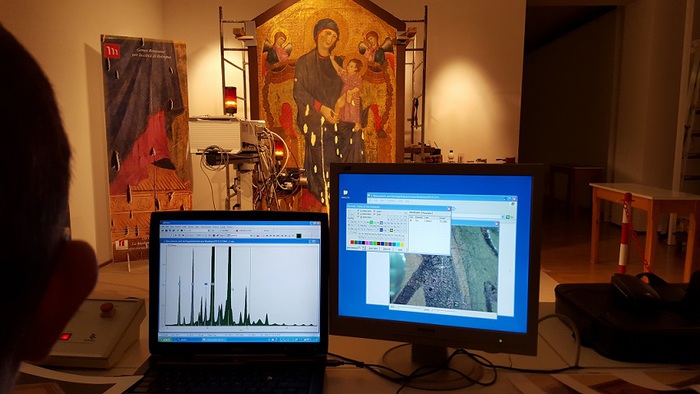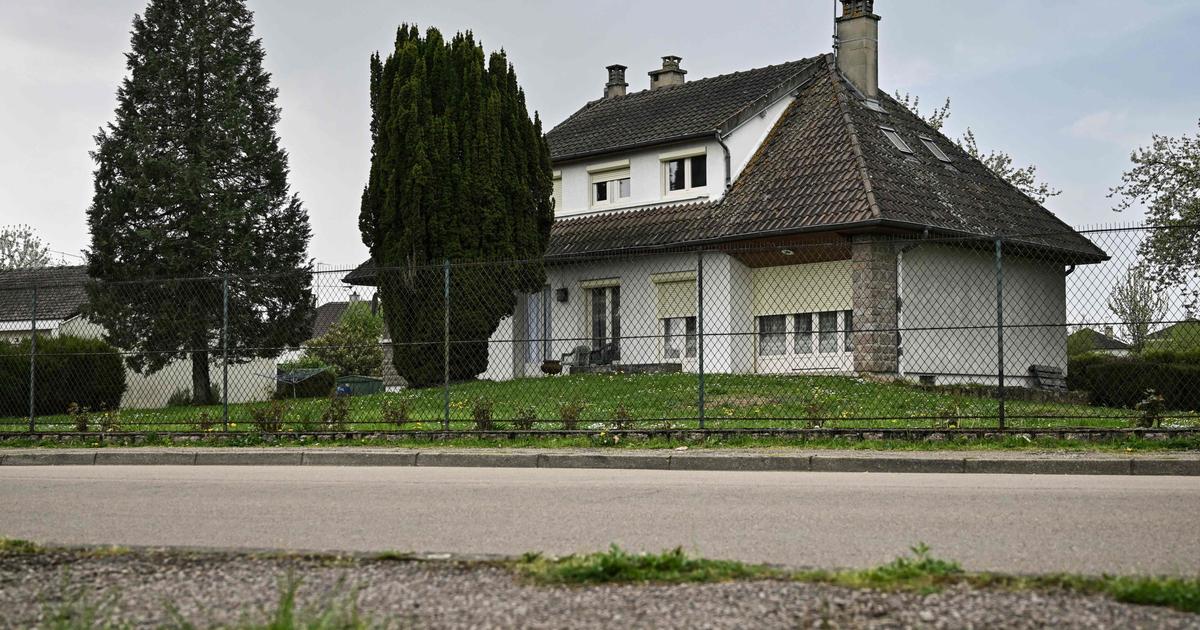The cause of the browning of the 'fake gold' used by Cimabue in his famous work 'La Maestà di Santa Maria dei Servi' in Bologna has been discovered: the phenomenon is mainly attributable to humidity and can worsen with exposure to light. This is demonstrated by the X-ray analyzes conducted at the ESRF synchrotron in Grenoble and the Desy research center in Hamburg by a team led by the 'Giulio Natta' Institute of Chemical Sciences and Technologies (Scitec) of the National Research Council and by the Alma Mater Studiorum - University of Bologna, in collaboration with the University of Perugia and the University of Antwerp (Belgium). The results, published in Journal of Analytical Atomic Spectrometry,they will be useful for the development of preventive conservation strategies for the Florentine painter's work and for those created with the same technique by other artists.
In fact, gilding characterizes many paintings by the famous masters of Italian sacred art of the late Middle Ages: gold, a symbol of royalty and devotion to God, was used in leaf to embellish backgrounds and decorative details, but due to the high costs, its use was generally limited to the creation of the most precious details, such as halos. For more extensive decorations, a mixture of metallic silver powder and orpiment was often used, that is a yellow pigment similar to gold but destined to darken and lose luster over time, just like in Cimabue's work.
The synchrotron analysis of a couple of micro-fragments of the cimabuesca shovel shows that "the browning is due to the formation of silver sulphide, a black compound, which, to be clear, is the same material responsible for the blackening of many objects or jewels made of silver ", explains Letizia Monico, researcher at Cnr-Scitec and first author of the study. "The chemical transformation, promoted by exposure to humidity and / or light, is accompanied by the formation of further whitish degradation compounds, such as sulphates and arsenates".
The study, integrated with investigations on artificially aged tempera pictorial specimens, demonstrates that "the original orpiment, by reaction with metallic silver, is transformed into silver sulphide and arsenic oxides in conditions of high relative humidity. and / or in the presence of light ", adds Aldo Romani, associate professor at the University of Perugia and co-author of the work. It was thus concluded that there are two factors on which to act to mitigate and slow down the browning process de la Maestà: expose the painting to levels of relative humidity not higher than about 30% and keep the lighting at the standard values foreseen for light-sensitive painting materials.







